Pain is a universal experience, and when it strikes, it can disrupt our lives in countless ways. For many, relief from pain becomes a top priority, and this is where medications like Tramadol 100mg come into play. It is a widely used opioid analgesic that aims to provide relief from moderate to moderately severe pain. In this blog, we’ll delve into the world of Tramadol 100 mg, exploring its uses, mechanisms of action, dosing, potential side effects, safety considerations, and more.
Unveiling Tramadol
Tramadol is a synthetic opioid analgesic. It falls into a class of medications known as opioids or narcotics, and its primary function is to alter the way the brain perceives and responds to pain. It’s often prescribed when other pain relievers like non-steroidal anti-inflammatory drugs (NSAIDs) or milder opioids aren’t sufficient to manage the pain effectively.
How Tramadol Works?
Tramadol’s mechanism of action is fascinating and multifaceted. It operates on two fronts:
- Mu-Opioid Receptors: This binds to mu-opioid receptors in the brain. This binding alters the perception of pain, leading to pain relief. However, it’s important to note that Tramadol is considered a weaker opioid compared to drugs like morphine.
- Neurotransmitter Reuptake Inhibition: Tramadol inhibits the reuptake of neurotransmitters, such as serotonin and norepinephrine, in the brain. This dual action contributes to its analgesic effects.
When and Why is Tramadol Prescribed?
Tramadol 100 mg is commonly used to treat various types of pain, including:
- Acute Pain: Tramadol can be prescribed to manage pain following surgery or injury.
- Chronic Pain: It is employed for long-term pain management, such as in cases of osteoarthritis or fibromyalgia.
- Neuropathic Pain: Tramadol can provide relief from nerve pain, which is often challenging to treat with other medications.
Dosage and Administration
The typical adult dose for Tramadol is 50-100 mg every 4-6 hours, as needed for pain. The maximum daily dose is generally 400 mg. It can be taken with or without food, but consistency in administration is key for achieving the desired pain relief.
Safety and Precautions
- Risk of Dependence: Like other opioids, Tramadol carries the risk of dependence or addiction. It should be used with caution and only as prescribed by a healthcare provider.
- Withdrawal Symptoms: Abruptly discontinuing Tramadol after long-term use can lead to withdrawal symptoms, including anxiety, restlessness, and sweating. This is why a gradual tapering of the medication is often recommended.
- Contraindications: Tramadol is contraindicated in individuals with a history of drug or alcohol abuse, as well as those with a history of seizures.
- Serotonin Syndrome: Combining Tramadol with certain antidepressants or other medications can increase the risk of serotonin syndrome, a potentially life-threatening condition. Hence, it’s crucial to inform your healthcare provider about all the medications you’re taking.
- Respiratory Depression: High doses of Tramadol or its misuse can lead to respiratory depression, which can be dangerous.
Who should avoid taking this tablet?
Tramadol 100 mg is a potent opioid medication that can provide effective pain relief, but it is not suitable for everyone. There are several categories of individuals who should avoid taking Tramadol 100 mg due to potential risks and contraindications:
- History of Substance Abuse: Individuals with a history of drug or alcohol abuse or addiction should avoid Tramadol. It carries a risk of dependence and can be misused.
- Seizure Disorders: Tramadol lowers the seizure threshold and can increase the risk of seizures. Therefore, it is not recommended for individuals with a history of epilepsy or other seizure disorders.
- Allergic Reactions: Those who have experienced allergic reactions to Tramadol or any of its components in the past should avoid it. Allergic reactions can be severe and include symptoms like hives, difficulty breathing, and swelling of the face, lips, tongue, or throat.
- Serotonin Syndrome Risk: Tramadol can lead to serotonin syndrome, a potentially life-threatening condition. It is more likely to occur when Tramadol is combined with certain antidepressants or other medications that increase serotonin levels. Therefore, individuals taking such medications should avoid Tramadol.
- Pregnancy and Breastfeeding: The safety of Tramadol during pregnancy and while breastfeeding is a subject of ongoing research. It is generally not recommended for pregnant or nursing individuals, as it can cross the placenta and be excreted in breast milk, potentially affecting the fetus or nursing infant.
- Pediatric Use: Tramadol is not typically prescribed to children unless under the supervision of a pediatric specialist. Its safety and efficacy in children are subject to age-related considerations.
- Liver and Kidney Issues: Individuals with severe liver or kidney impairment may need dose adjustments or should avoid Tramadol altogether. The medication is metabolized in the liver and excreted through the kidneys, and impaired function can affect its processing in the body.
- Elderly Patients: Older adults may be more sensitive to the effects of Tramadol, including side effects like dizziness and drowsiness. Lower doses may be recommended for this population.
It is crucial to consult a healthcare provider before taking Tramadol, as they can assess your medical history, existing conditions, and other medications you may be taking to determine if Tramadol is safe and appropriate for your pain management needs. Avoiding Tramadol when it is contraindicated is essential to prevent potential adverse effects and ensure your safety and well-being.
Factors affecting Tramadol 100 mg
The intake of Tramadol 100 mg tablets can be influenced by several factors, as individuals may have varying medical conditions, pain levels, and responses to the medication. When taking Tramadol 100 mg, it’s important to consider the following factors that can affect its use:
- Tramadol is primarily prescribed to manage pain, but the specific medical condition causing the pain can vary widely. The underlying condition, whether it’s acute or chronic, and its severity will determine the need for Tramadol and the appropriate dosage.
- The intensity of pain plays a significant role in determining the dosage and frequency of Tramadol intake. Individuals experiencing severe pain may require higher doses.
- Over time, some individuals may develop a tolerance to Tramadol, necessitating higher doses for the same level of pain relief. The potential for dependence and withdrawal symptoms can also affect intake patterns.
- The recommended dose and instructions provided by the healthcare provider are crucial. They determine the initial dose, any adjustments, and the duration of Tramadol therapy.
- Age and body weight can impact the dosing of Tramadol. Adjustments may be necessary for older adults and pediatric patients to ensure safe and effective pain management.
- Tramadol is metabolized in the liver and excreted through the kidneys. Impaired liver or kidney function can affect the way the drug is processed in the body, potentially requiring dose adjustments.
- Tramadol can interact with other medications, such as sedatives, antidepressants, or other opioids. The presence of other drugs in the treatment regimen can influence intake patterns.
- The occurrence of side effects, such as dizziness, drowsiness, constipation, or nausea, can impact how often and how much Tramadol a patient is willing to take. Effective management of side effects is essential to ensure compliance with the prescribed regimen.
- A patient’s psychological state, including anxiety and depression, can influence Tramadol intake. Emotional and psychological factors may affect adherence to the prescribed treatment plan.
- The intended duration of Tramadol use varies. Short-term use for acute pain and long-term use for chronic pain will have different intake patterns. Long-term users may require more vigilant monitoring.
- A history of substance abuse or addiction can complicate Tramadol intake. Healthcare providers need to carefully assess and monitor such patients to minimize the risk of misuse.
- The use of Tramadol during pregnancy and while breastfeeding may require careful consideration due to potential risks to the fetus or nursing infant.
Considering these factors, it’s crucial to have open and regular communication with a healthcare provider when using Tramadol to ensure the safe and effective management of pain. Misuse or improper use of Tramadol can have serious consequences, including the risk of addiction, overdose, and other adverse effects. Always follow your healthcare provider’s guidance regarding the appropriate dosage and seek their input if you have concerns or need adjustments.
Strength of Tramadol tablets
Tramadol tablets come in various strengths, typically ranging from 50 milligrams (mg) to 200 mg. The most common strengths of Tramadol tablets include:
- Tramadol 50 mg Tablets: Tramadol 50 mg is a common starting dose and is often used to manage mild to moderate pain.
- Tramadol 100 mg Tablets: Tramadol 100 mg tablets are frequently prescribed for moderate to moderately severe pain.
- Tramadol 150 mg Tablets: Tramadol 150 mg tablets may be prescribed when higher pain relief is required.
- Tramadol 200 mg Tablets: Tramadol 200 mg tablets are among the higher strengths and are typically used for more severe pain.
The specific strength of Tramadol prescribed to an individual depends on several factors, including the severity of the pain, the individual’s medical condition, and their response to the medication. Healthcare providers will determine the appropriate dosage based on these considerations, with the goal of achieving effective pain relief while minimizing side effects and the risk of dependence.
It’s essential to use Tramadol only as prescribed by a healthcare provider and to follow their instructions regarding the dosage and administration of the medication.
Points to emphasize regarding Tramadol tablet
When discussing Tramadol tablets, there are several key points to emphasize, whether you’re a healthcare provider, patient, or anyone seeking information about this medication. Here are some essential points to focus on:
- Tramadol is primarily used for the management of pain, both acute and chronic, and can be effective in relieving moderate to moderately severe pain.
- Tramadol is classified as an opioid analgesic, which means it interacts with the opioid receptors in the brain to provide pain relief. However, it is considered a weaker opioid compared to drugs like morphine.
- Tramadol is available by prescription only. It should be taken under the guidance and supervision of a healthcare provider.
- The appropriate dosage of Tramadol varies depending on the patient’s condition and the severity of the pain. It’s essential to follow the healthcare provider’s instructions regarding dosing and administration.
- Tramadol may cause side effects, including dizziness, drowsiness, nausea, and constipation. Patients should be aware of these potential side effects and report any unusual or severe symptoms to their healthcare provider.
- Tramadol carries the risk of dependence and tolerance, meaning that over time, a patient may require higher doses for the same level of pain relief. It’s crucial to use Tramadol as directed by a healthcare provider to minimize these risks.
- Tramadol is not suitable for everyone. Patients with a history of substance abuse, seizures, or allergies to Tramadol should avoid it. Healthcare providers must assess the patient’s medical history before prescribing.
- Tramadol can interact with other medications, including certain antidepressants and sedatives. Patients should inform their healthcare provider of all medications they are taking to avoid potential interactions.
- Combining Tramadol with other drugs that increase serotonin levels can lead to serotonin syndrome, a potentially life-threatening condition. Patients should be cautious and consult their healthcare provider about potential interactions.
- Tramadol should be stored in a safe place, away from moisture and heat, and out of reach of children and pets.
- The use of Tramadol during pregnancy and while breastfeeding should be discussed with a healthcare provider, as it can have potential risks to the fetus or nursing infant.
- Patients should not abruptly discontinue Tramadol if they’ve been using it for an extended period. Tapering under a healthcare provider’s guidance may be necessary to manage potential withdrawal symptoms.
The maximum dose of Tramadol 100mg
The maximum recommended dose of Tramadol 100 mg or any Tramadol formulation depends on several factors, including the individual’s medical condition, pain severity, tolerance, and the healthcare provider’s discretion. However, it’s important to note that there are general guidelines and safety considerations.
In general, the maximum daily dose of Tramadol should not exceed 400 mg. This means that if you are taking Tramadol 100 mg tablets, the maximum recommended frequency of administration is typically every 4-6 hours, depending on the individual’s response to the medication and pain relief needs.
It’s crucial to use Tramadol as prescribed by a healthcare provider, and any adjustments to the dosage should be made under their guidance. Exceeding the recommended dose can lead to an increased risk of side effects, dependence, and potential overdose. Tramadol should be used judiciously, and any concerns about the dosage should be discussed with your healthcare provider.
Correct way to store Tramadol tablet
To store Tramadol tablets safely and effectively, you should follow these guidelines:
- Original Packaging: Keep Tramadol in its original packaging or container, as it typically includes important information like expiration dates, dosage instructions, and manufacturer details.
- Room Temperature: Store the medication at room temperature (between 68°F and 77°F or 20°C to 25°C). Avoid extreme heat, humidity, and cold, as these can affect the medication’s stability.
- Keep Away from Moisture: Ensure that the container is tightly sealed to prevent moisture from getting inside, as humidity can degrade the medication.
- Avoid Direct Sunlight: Tramadol should be stored away from direct sunlight and other sources of UV light, as this can cause degradation of the drug.
- Childproof Storage: Store Tramadol out of the reach of children and pets in a safe and secure location.
- Check for Expiry: Regularly check the expiration date on the packaging, and discard any tablets that have expired. Do not use Tramadol beyond its expiry date, as it may not be as effective or safe.
- Keep It Dry: Make sure the storage area is dry and well-ventilated. Avoid storing it in the bathroom, where moisture levels can be higher.
- Follow Specific Instructions: If your healthcare provider or the medication label provides specific storage instructions, be sure to follow those as well.
Always follow your healthcare provider’s instructions regarding the use and storage of Tramadol, and if you have any doubts about the medication’s safety or effectiveness, consult your healthcare provider or a pharmacist.
Common Side Effect
Common side effects of Tramadol 100 mg may include dizziness, drowsiness, constipation, nausea, and headache. These side effects are generally mild and tend to subside as your body adjusts to the medication. If they persist or worsen, consult your healthcare provider.
Interaction with Other Medication
Tramadol can interact with various medications, including other opioids, sedatives, and certain antidepressants. These interactions can lead to adverse effects, so it’s crucial to inform your healthcare provider about all medications you are taking.
Special Population
- Geriatric Patients: Older adults may require lower doses of Tramadol due to reduced liver and kidney function.
- Pediatric Patients: Tramadol’s use in children is generally reserved for specific cases and under close medical supervision.
- Patients with Renal or Hepatic Impairment: Dosing adjustments may be necessary in individuals with impaired kidney or liver function.
Overdose
An overdose of Tramadol can be life-threatening, leading to symptoms like slow or shallow breathing, extreme drowsiness, and loss of consciousness. If an overdose is suspected, immediate medical attention is crucial.
Legal Status
The legal status of Tramadol varies by country and region. In some places, it is a controlled substance due to its potential for misuse.
Misuse and Dependence
Tramadol is sometimes misused for its euphoric effects. Misuse and dependence are significant concerns, and individuals with a history of substance abuse should be cautious when using this medication.
Discontinuation
Discontinuing Tramadol should be done under the guidance of a healthcare provider to manage potential withdrawal symptoms. A tapering schedule may be recommended to minimize discomfort.
Proper Storage
Tramadol should be stored at room temperature, away from moisture and heat. Keep it out of reach of children and pets.
Regular Monitoring and Alternatives
Regular follow-up appointments with a healthcare provider are essential to monitor the effectiveness of Tramadol, adjust the dosage if needed, and address any side effects or concerns. In some cases, non-opioid pain management approaches, such as physical therapy, non-pharmacological treatments, or other medications, may be considered as alternatives to Tramadol.
FAQ on Tramadol Tablet
Q. What is Tramadol 100mg used for?
Tramadol 100mg is a medication commonly used to relieve moderate to moderately severe pain. It belongs to a class of drugs called opioid analgesics.
Q. How does Tramadol 100mg work?
Tramadol works by binding to opioid receptors in the brain and spinal cord. It also inhibits the reuptake of certain neurotransmitters, like serotonin and norepinephrine, which can modulate pain perception.
Q. Is Tramadol 100mg a controlled substance?
Yes, Tramadol is considered a controlled substance in many countries due to its potential for misuse and dependence. Regulations and scheduling may vary by region.
Q. What are the common side effects of Tramadol 100mg?
Common side effects of Tramadol 100mg can include dizziness, nausea, constipation, headache, and drowsiness. More serious side effects are possible and should be reported to a healthcare provider.
Q. How should I take Tramadol 100mg?
Follow your healthcare provider’s instructions on how to take Tramadol. Typically, it is taken orally with or without food, and the dosage and frequency depend on your specific medical condition and the severity of your pain.
Q. Can Tramadol 100mg be addictive?
Yes, Tramadol has the potential for dependence and addiction, especially if used inappropriately or for an extended period. It’s essential to use the medication as prescribed by your healthcare provider.
Q. Can I drink alcohol while taking Tramadol 100mg?
It is generally not recommended to consume alcohol while taking Tramadol, as it can enhance the sedative effects and increase the risk of side effects like dizziness and respiratory depression.
Q. Is Tramadol safe for everyone?
Tramadol may not be suitable for individuals with a history of substance abuse, certain medical conditions, or those taking certain medications. It’s crucial to inform your healthcare provider of your medical history and current medications before starting Tramadol.
Q. What precautions should I take when using Tramadol?
Some precautions to consider include not driving or operating heavy machinery while under the influence of Tramadol, and not abruptly discontinuing the medication to avoid withdrawal symptoms. Always consult your healthcare provider for specific guidance.
Q. Can I buy Tramadol 100mg without a prescription?
In most countries, Tramadol is available by prescription only. It is illegal and dangerous to obtain or use Tramadol without a valid prescription from a licensed healthcare provider.
Q. What should I do if I miss a dose of Tramadol 100mg?
If you miss a dose, take it as soon as you remember. However, if it’s close to the time for your next scheduled dose, skip the missed dose and continue with your regular dosing schedule. Do not double the dose to make up for a missed one.
Q. How should Tramadol 100mg be stored?
Tramadol should be stored in a cool, dry place, away from direct sunlight, and out of reach of children. It should be kept in its original packaging with a tightly sealed cap.
Always consult with your healthcare provider or pharmacist for specific guidance and information related to your use of Tramadol 100mg, as individual circumstances may vary.


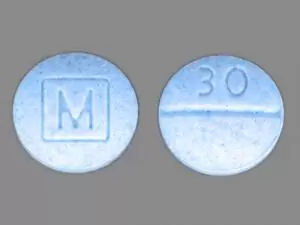

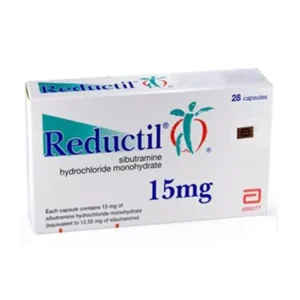

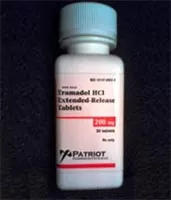


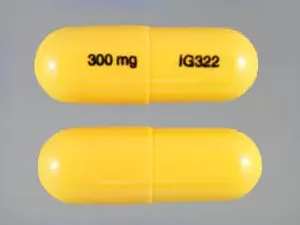

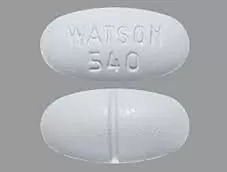

Kevin Jedd –
Really professional and efficient service.
Will definitely use again.
Oliver Joe Root –
I’ve used this site again in 15 days customer service awesome. It provides me quick relief without making me feel overly drowsy.
Loren Smith –
Best company I’ve ordered from. Good sales Prompt shipping Great products well made.